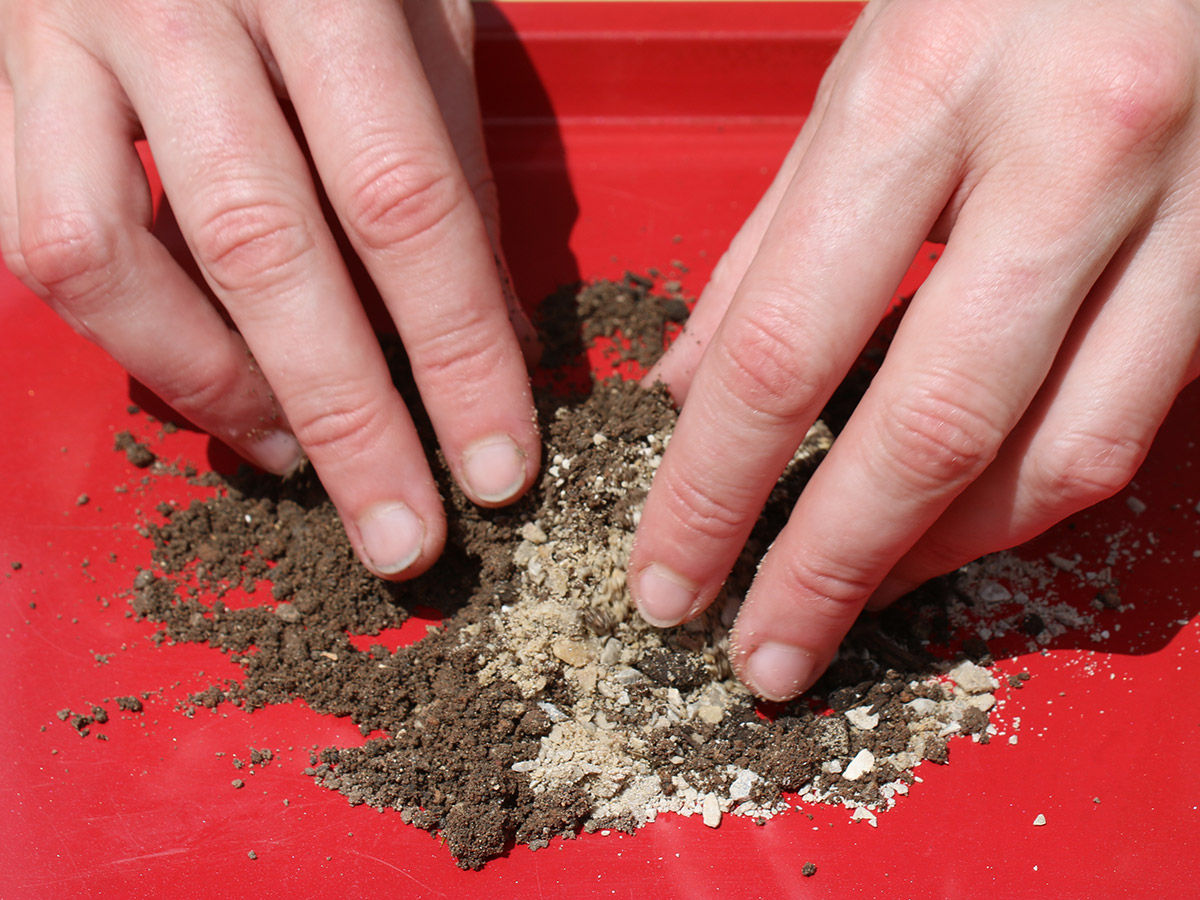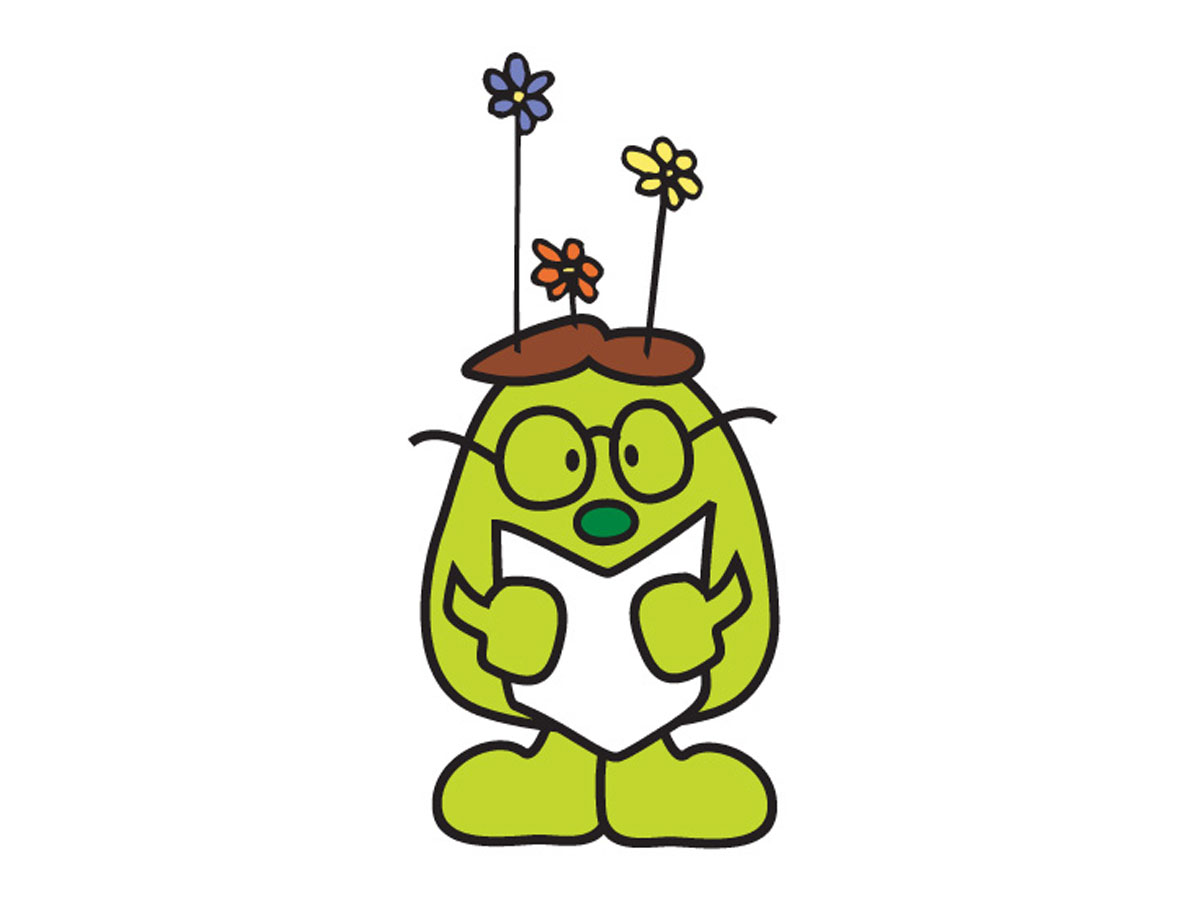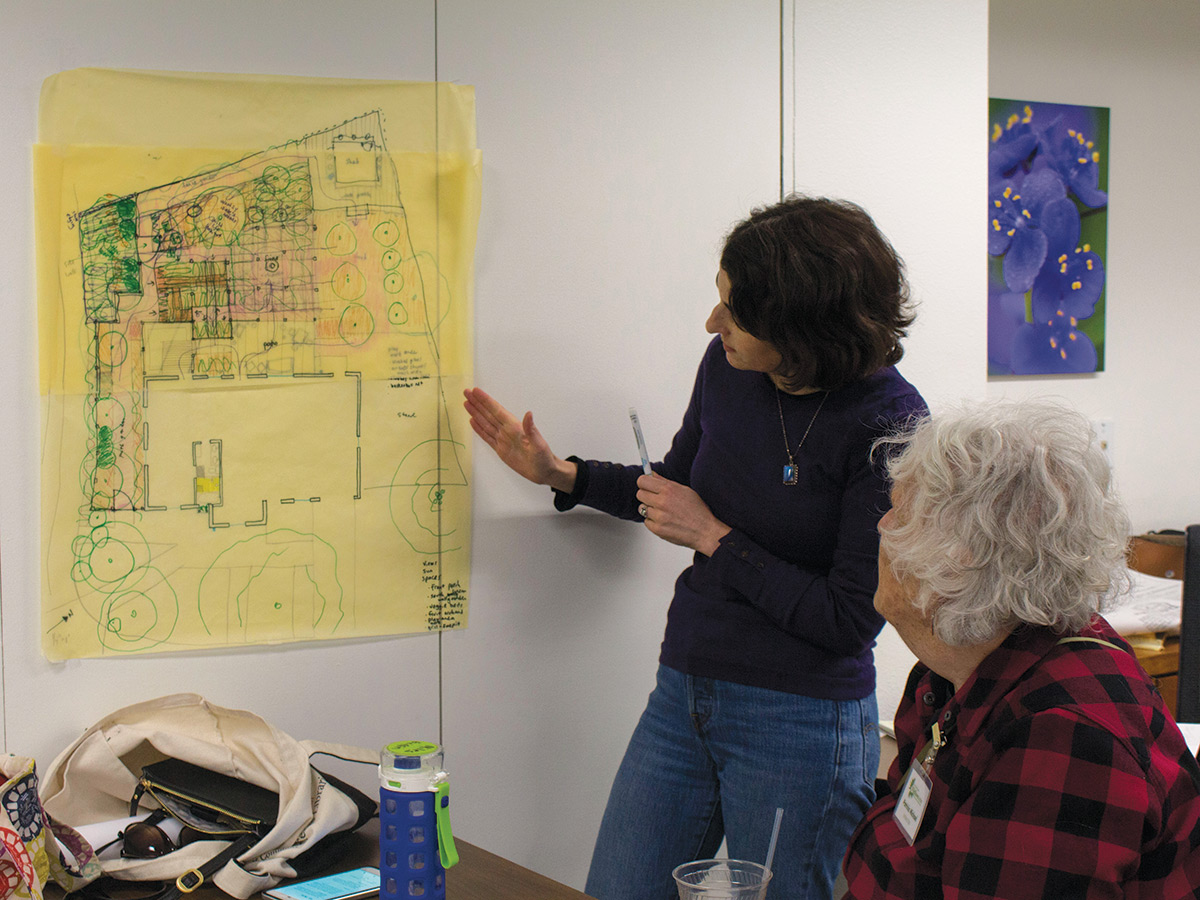Plant a Wildflower Meadow
Natural meadows occur in areas such as alpine slopes or prairies, where environmental factors limit the growth of woody species and halt the natural progress of plant succession. Most meadows are only a transitional stage and will be replaced by shrubs and trees. Long-term management is important to maintain a meadow over time.
Many meadow gardeners strive for a field of wildflowers with only occasional clumps of grass. Yet grasses are an essential component of a self-sustaining, low-maintenance wildflower meadow. Learn to recognize and encourage desirable native grasses so you can discourage the growth of aggressive non-native grasses.
Selecting the Appropriate Meadow Species
A wildflower meadow is a complex, interactive plant community, not just a collection of individuals. Choose a mixture of native species that, over a period of time, will naturally sort themselves out; the species best adapted to the site will be the ones that thrive after the first few years. Inventory the site and its microhabitats, such as wet, low-lying areas; shady areas; or open fields. Use your observations to determine the species best suited to each area.
You’ll want to plant perennials, annuals and biennials in your meadow, as well as a variety of other native species that will provide color throughout the growing season. When in doubt, check to make sure the plants you’re choosing aren’t on your state’s noxious weed list.
Grasses
Most meadow and prairie managers recommend that native grasses make up 50 to 80 percent of the meadow species. Grasses have several functions:
- They provide support and protection for tall flowers.
- They fill in spaces around wildflowers that would otherwise be occupied by weeds.
- They add color and texture to the landscape.
- They prevent soil erosion.
- They to provide food and cover for wildlife.
Grasses are either mat-forming or bunch-forming. Mat- or sod-forming grasses spread by runners or stems that grow horizontally along the ground and put roots down. Bunch grasses grow in distinct clumps.
Many native sod grasses, such as Bouteloua dactyloides (buffalograss) grow in a loose matrix that easily allows room for wildflowers. Open spaces between native bunch grasses such as Andropogon gerardii (big bluestem), Bouteloua curtipendula (sideoats grama) and Muhlenbergia lindheimeri (Lindheimer’s muhly) offer gaps for herbaceous plant establishment.
Most non-native turf grasses, such as St. Augustine and annual rye, are too competitive to allow other plants to become established. Plus, many of those turf grasses are cool-season grasses that begin their growth in early spring, with maximum development occurring from late March to early June. They mature and produce seeds in late spring or early summer and become semi-dormant during the summer. Growth usually resumes during the cool months of fall, giving competition to spring wildflowers that grow during winter months.
Warm-season grasses resume their growth in late spring and continue to grow until early fall, producing most of their foliage in midsummer. Competition with warm-season grasses shouldn’t be a problem for your wildflowers.
Soil Preparation
If you select plants appropriate to the microhabitats on your site, they should grow well without soil improvements once they’re established. Although tilling the soil may encourage weeds, it can also provide habitat for early succession species, like the bluebonnet and snow-on-the-mountain that readily colonize disturbed soil. To learn more about preparing your soil, see the “Soil Preparation” portion of our Guide to Native Plant Gardening. You can plant your wildflower and native grass seeds as soon as you are sure competing vegetation is under control.
When to Plant
Fall is the best time to plant many native species in Central Texas. Some seeds need a chilling period (cold stratification) to break their dormancy, while others have hard seed coats that need to be worn down or scarified before they can germinate (learn more about scarifying and stratifying seeds). Sowing seeds in the fall often provides the conditions necessary to break seed dormancy. Warm, wet spring weather then induces the seeds to germinate. Ideally, native seeds should be planted following nature’s seeding schedule.
Seeding Methods
One rule applies to all plantings: The seeds must be in good contact with the soil. Soil contact helps the seeds retain moisture, which is necessary for germination and provides a substrate for seedling growth.
Hand-broadcasting is the simplest method. An adjustable, hand-carried mechanical seeder is effective for many plant species. Mixing seeds with fine, damp sand in a proportion of four parts sand to one part seed and then distributing the seed-sand mixture should eliminate clumping. Seed the prepared area, then rake or tamp seeds into the soil to ensure good seed-soil contact. Spreading a wildflower mix evenly is difficult because of the different sizes and weights of seeds. Purchasing the seeds for each species separately and seeding one species at a time can eliminate this problem.
For more immediate results, you may want to use a combination of seeding and planting container-grown wildflowers. Adding container-grown plants is especially convenient when planting slower-growing perennials and can be fairly economical if you’re planting a small area. Plant seeds after planting container-grown plants to avoid soil disturbance. Remember, all plants require water to germinate. If rain doesn’t fall within a couple of days after planting, water the area thoroughly at least once, if possible.
The First Year
How you manage your wildflower area depends on the look you want to achieve. Individual species have different management needs and may require a combination of techniques; the amount and degree of maintenance will vary from year to year.
Annual species germinate quickly and visually dominate a site the first year. Although many perennials germinate the first year, their root growth comprises two to three times the amount of the above-ground vegetation, and they normally don’t flower until the second or third year. Native bunch grasses usually don’t flower or set seed the first year and, depending on the species, may reach heights of only two or three inches by the end of the growing season. Under favorable environmental conditions, Schizachyrium scoparium (little bluestem) develops a two-to-three-inch primary root system before any aboveground shoots appear.
If tall annual weeds are shading your wildflower seedlings, mow at a height set higher than the seedlings. A scythe, hand clipper or weed cutter will do the job if you don’t have a mower or if the blades can’t be set high enough to miss the seedlings. Because most of the weeds will be annuals, mowing them before they set seed helps destroy the next season’s seed crop. The exact time and height for mowing varies with each site and the species planted. In many cases, you can’t avoid hand-weeding or spot applications of an herbicide, especially if aggressive species or perennial weeds dominate.
Annual and biennial wildflowers must be allowed to reseed to produce a strong stand the next year. Once your meadow wildflowers have bloomed, delay mowing the area until at least half of the late-blooming species has dropped seeds. If your meadow has tall, warm-season native grasses, wait until late summer or early fall to mow, allowing them to elongate, flower and set seed. Never mow mid-to-tall-grasses below six inches. Although you can mow grasses in late fall when they are dormant, you may want to leave them intact until late winter or early spring to provide food and cover for wildlife and add texture to an otherwise barren winter landscape.
When you mow your meadow, leave the clippings which may have viable seeds in place. Remove the clippings of any weedy or undesirable species that may have set seed.
The Second Year
With well-spaced and abundant rainfall, most native bunch grasses will flower and produce seeds by the second year. Some biennial and perennial wildflowers will begin to bloom. If optimum conditions didn’t occur the first year, residual seeds from the previous year may germinate.
As your wildflower meadow fills out, you may choose to reseed or spot-transplant species to fill in bare spots or increase species diversity, especially the second or third year after seeding.
If annual weeds continue to be a problem, you’ll need to remove them before they set seed. The need to weed should taper off as wildflowers and native grasses become more established.
The Third Year and Beyond
By the third or fourth year, your meadow area may benefit from a controlled burn if enough fuel has accumulated. Fire is a natural process in many ecosystems and can reduce woody plants and other invasive species. Burning also stimulates the growth of many native grasses and prairie perennials and breaks the dormancy of some seeds.
Remember that burning is a technique that requires special expertise and should never be attempted before consulting experienced experts! Fire is a tool that can enhance or inhibit a species, depending on your goal. The target species isn’t the only one that will be affected. When and how you burn depends on what you want to achieve.
Many areas require permits for burning. In addition, urban areas often have regulations prohibiting prescribed burns. If you can’t burn your meadow, you can continue to control weed invasions and remove excess thatch by mowing or spot-treating with an herbicide.
Expect annual wildflowers to generally decrease by the third and fourth years as perennial wildflowers and grasses become established. This is the natural result of ecological succession. If keeping the annuals, such as bluebonnets, is a priority, you can keep the meadow in the early stages of succession by periodically disturbing the soil with fire, mowing or digging up the soil and removing some of the perennial species.
How-Tos
Increase your skills and knowledge with these pro tips from our experts
Mr. Smarty Plants
10,000 answers to your gardening and plant questions
Classes & Programs
Participate in one of our popular educational programs




